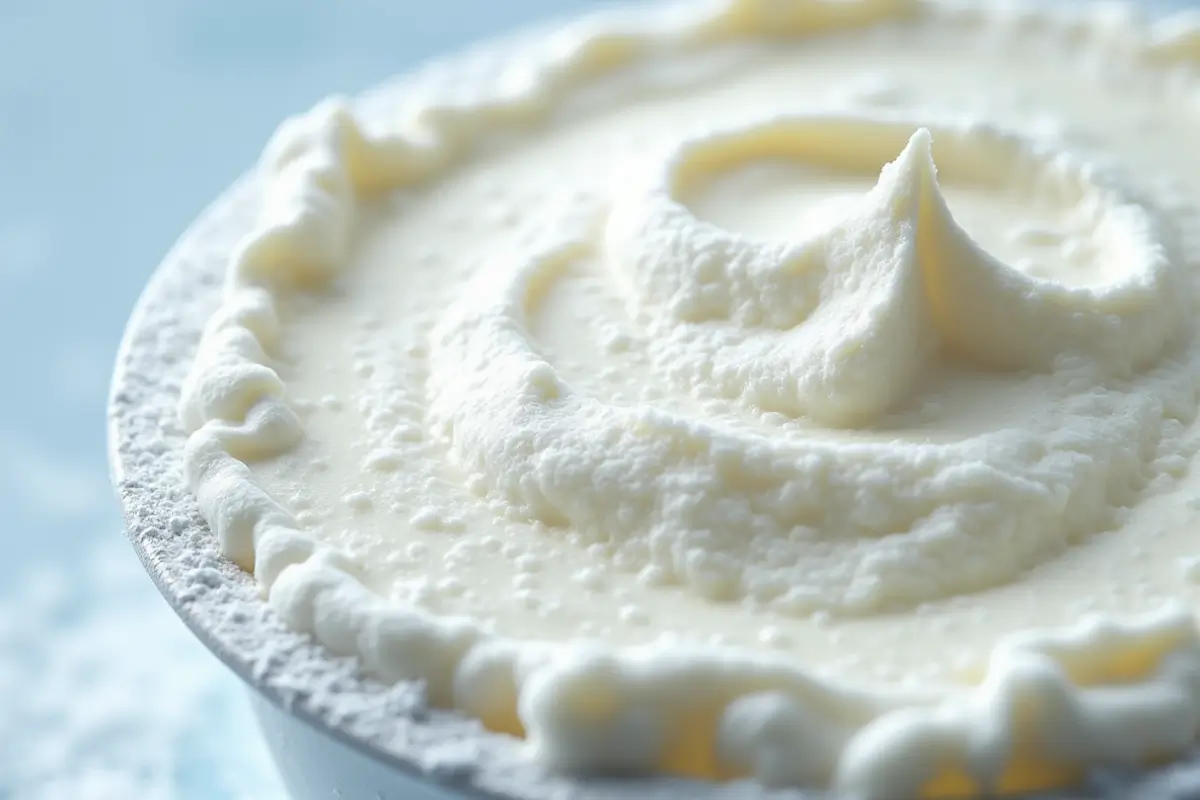Freezing foods is a convenient way to manage your kitchen, reduce waste, and prepare meals ahead of time. But when it comes to dairy, you might hesitate. If you’re wondering, “Can I freeze cottage cheese?”, the answer is yes—with some conditions. While freezing this dairy product is not perfect for every use, it can extend its shelf life and make it a practical solution for certain recipes. Let’s dive into how freezing affects cottage cheese, the best ways to store it, and how to use it creatively after freezing.
What Is Cottage Cheese?
Cottage cheese is a soft, fresh dairy product made from curdled milk. It has a creamy texture with noticeable curds and is widely appreciated for its mild flavor. Its nutritional profile makes it popular among health-conscious individuals, as it’s rich in protein, calcium, and other essential nutrients. Cottage cheese is also versatile, making it suitable for savory dishes, sweet breakfasts, and even as a snack on its own.
This fresh cheese, however, has a relatively short shelf life, leading many to consider freezing as a storage option. But before you rush to pop it in the freezer, there are a few things to consider.
Can You Freeze Cottage Cheese?

Yes, you can freeze cottage cheese. Freezing can be a lifesaver when you have an excess supply or don’t plan to use it before its expiration date. However, not all cottage cheeses are created equal when it comes to freezing. Full-fat versions tend to hold up better during freezing, while low-fat and fat-free varieties may experience more noticeable changes in texture and consistency.
If you plan to eat cottage cheese fresh as part of a salad or spread, freezing might not be ideal. On the other hand, if it’s destined for cooked dishes or smoothies, freezing can work exceptionally well.
How Does Freezing Affect Cottage Cheese?
When you freeze cottage cheese, ice crystals form within its structure. These ice crystals can cause the curds to separate from the liquid, leading to a grainy texture after thawing. While the taste remains largely unchanged, the consistency can make it less appealing for raw consumption.
- Texture: Expect some graininess after thawing.
- Taste: The flavor remains intact, making it suitable for cooked dishes.
- Nutritional Value: Freezing doesn’t significantly impact the nutritional content.
Best Methods to Freeze Cottage Cheese
Freezing cottage cheese requires some preparation to ensure it maintains the best quality possible. Here are the top methods:
Freezing in Original Packaging
- If the packaging is unopened, you can freeze cottage cheese as is.
- To provide extra protection, place the original container in a resealable freezer bag.
- Label the bag with the date to track its freshness.
Transferring to Freezer-Safe Containers
- For opened cottage cheese, transfer it to an airtight, freezer-safe container.
- Portion the cheese into smaller quantities to thaw only what you need later.
- Remove excess air to prevent freezer burn.
How to Thaw Cottage Cheese Properly
Thawing frozen cottage cheese correctly is essential to retaining as much of its original quality as possible.
- Refrigerator Method: Place the frozen container in the fridge and let it thaw slowly overnight. This gentle method minimizes texture loss.
- Cold Water Method: For quicker thawing, submerge the sealed container in cold water. Change the water every 30 minutes until thawed.
- Avoid Heat: Do not use warm water or microwaves, as they can further degrade the texture and taste.
Creative Uses for Frozen Cottage Cheese
Once thawed, cottage cheese might not be perfect for fresh applications, but it shines in recipes where its texture changes aren’t noticeable.
- Baked Dishes: Incorporate cottage cheese into lasagna, casseroles, or stuffed pasta.
- Smoothies: Blend it with fruits and a splash of milk for a creamy, protein-packed drink.
- Pancakes: Use it in batter for fluffy, moist pancakes.
- Dips: Combine it with herbs and spices for a delicious spread.
Recipes Using Frozen Cottage Cheese
Baked Cottage Cheese Pasta
| Ingredient | Quantity |
|---|---|
| Thawed Cottage Cheese | 2 cups |
| Cooked Pasta | 1 pound |
| Tomato Sauce | 2 cups |
| Mozzarella Cheese | 1 cup shredded |
| Italian Seasoning | 1 tsp |
Instructions:
- Preheat oven to 375°F (190°C).
- Combine thawed cottage cheese, cooked pasta, and tomato sauce in a large bowl.
- Pour the mixture into a greased baking dish.
- Sprinkle mozzarella cheese on top and season with Italian herbs.
- Bake for 20–25 minutes, or until bubbly and golden.
How Long Can Cottage Cheese Be Frozen?
Cottage cheese can be safely stored in the freezer for up to three months. Beyond this, the texture and flavor may degrade. Always inspect thawed cottage cheese for signs of spoilage, such as an off smell or discoloration, before use.
Cultural or Historical Context
The origins of cottage cheese trace back thousands of years, with evidence suggesting its production began in ancient Mesopotamia, where people discovered how to curdle milk using natural acids. Over time, cottage cheese became a staple across various cultures due to its simple preparation and high nutritional value. Its mild flavor and adaptability allowed it to seamlessly integrate into culinary traditions worldwide.
In European countries, particularly in Central and Eastern Europe, cottage cheese plays a central role in dishes like pierogi (Polish dumplings) and syrniki (Russian cheese pancakes). These recipes often highlight the soft, curdy texture of cottage cheese and underscore its importance in daily diets and festive meals. In the United States, cottage cheese gained prominence in the 20th century as a health food, celebrated for its low fat and high protein content.
Cottage cheese recipes, such as baked pasta or lasagna, reflect a blend of Mediterranean and American culinary traditions. Italian-American cuisine, for instance, often incorporates cottage cheese as a substitute for ricotta in lasagna or stuffed shells. Its creamy texture complements tomato-based sauces and provides a cost-effective, protein-rich alternative.
Traditionally, dishes featuring cottage cheese are often served on festive occasions or family gatherings. In Eastern Europe. In American households, cottage cheese-based dishes like casseroles or desserts often appear at potlucks and casual get-togethers.
Today, cottage cheese remains a versatile ingredient, bridging cultures and cuisines. Whether served as a humble snack or a festive dish, it continues to be cherished for its simplicity and adaptability, making it an enduring symbol of comfort and nourishment.
Variations and Tips
Cottage cheese recipes are incredibly versatile, allowing for countless adaptations to suit your personal preferences or dietary needs. For a richer, creamier taste, opt for full-fat cottage cheese. If you’re aiming for a lighter version, low-fat or fat-free options work well in most recipes, though they may have a slightly grainier texture after freezing.
To enhance flavor, consider mixing herbs and spices into your cottage cheese before incorporating it into a dish. A pinch of garlic powder, chopped fresh dill, or a sprinkle of smoked paprika can elevate the taste significantly. For sweet dishes, stir in a drizzle of honey or a splash of vanilla extract for added depth.
Personalize your baked pasta or casserole by adding your favorite vegetables, like spinach, zucchini, or mushrooms. For extra protein, incorporate shredded chicken or ground turkey. If you’re making a smoothie with frozen cottage cheese, blend it with tropical fruits like mango or pineapple for a refreshing twist.
To improve presentation, top baked dishes with a layer of shredded mozzarella or a sprinkle of Parmesan cheese for a golden crust. When serving cottage cheese spreads or dips, garnish with a few fresh herbs or a dash of olive oil to make the dish visually appealing.
Tips for Maintaining Quality During Freezing
- Label Containers: Always write the freezing date to keep track of storage time.
- Use Quality Packaging: Invest in airtight containers or high-quality freezer bags.
- Portioning: Freeze cottage cheese in smaller servings to make thawing more efficient.
Frequently Asked Questions
Can I freeze cottage cheese for smoothies?
Yes, it’s an excellent option for smoothies since texture changes are unnoticeable when blended.
Does freezing cottage cheese affect its flavor?
No, the flavor typically remains the same, though the texture may change.
Is it safe to eat cottage cheese after freezing for six months?
It’s generally safe if stored correctly, but quality may decline. Aim to use it within three months.
Should I drain cottage cheese before freezing?
Draining isn’t necessary but can reduce liquid separation during thawing.
Can low-fat cottage cheese be frozen?
Yes, but be prepared for more noticeable textural changes compared to full-fat varieties.
Can thawed cottage cheese be refrozen?
No, refreezing is not recommended as it can compromise texture and safety.
Conclusion
Freezing cottage cheese is a simple, effective way to extend its shelf life and reduce waste. While it’s not ideal for every use, it works wonderfully in cooked recipes, dips, and smoothies. By following proper freezing and thawing techniques, you can ensure your cottage cheese remains a valuable ingredient in your kitchen. Try it in your next lasagna or blend it into a smoothie to see just how versatile frozen cottage cheese can be!
Have you tried freezing cottage cheese before? Share your experience in the comments below, or explore more of our kitchen storage tips to save time and reduce waste!

